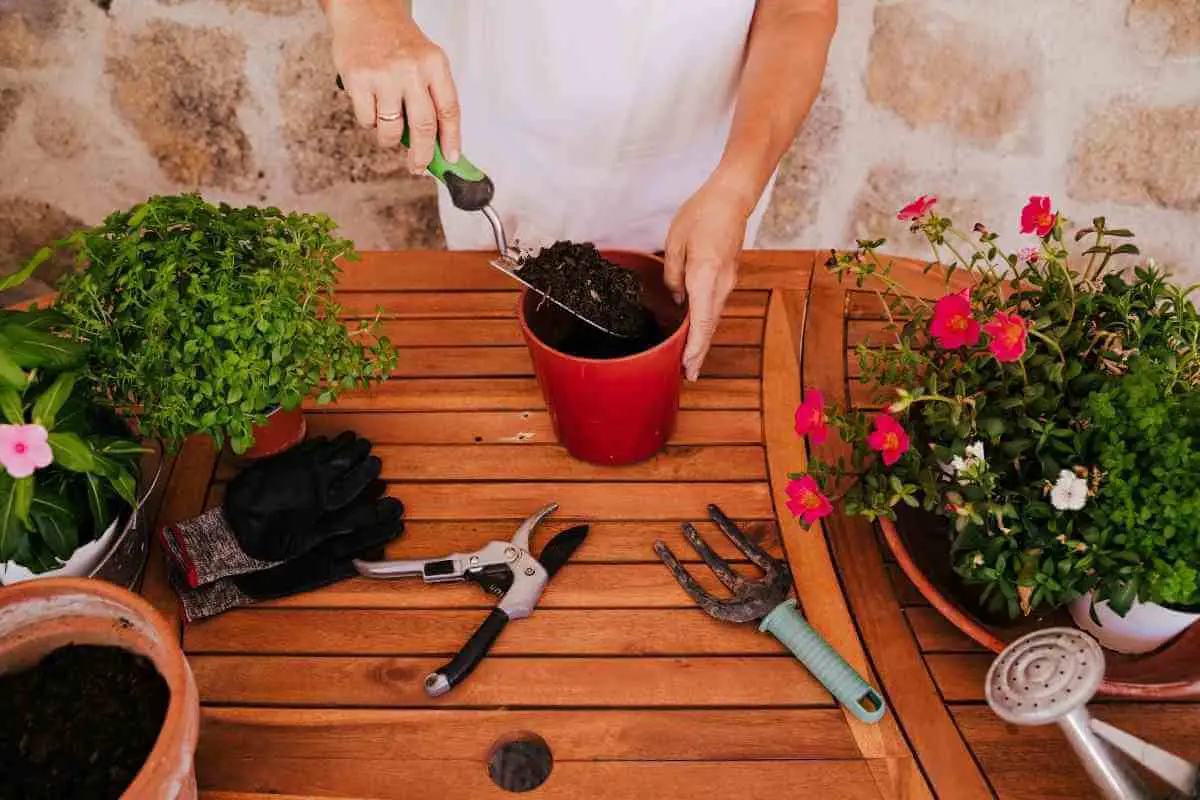Healthy soil plays a major role in the development of your plants.
If healthy soil exists, then the opposite must also be true.
If the soil can be unhealthy you may be wondering how to tell if potting soil is bad?
There are several telltale signs that potting soil has gone bad. These include a bad odor, insects, mold, and changes in your plant. Bad soil doesn’t mean it has to be thrown out, and in most cases, you can fix your soil.
Can Potting Soil Go Bad
It’s just dirt, right? Can soil even go bad?
Potting soil is a combination of:
- dirt
- additives to assist in drainage
- and organic matter
This organic matter is usually decomposed or is decomposing.
I guess you could say that in a way, it has already gone bad. The decomposed organic matter is nutrient-rich, and that’s what your plants need.
You can think of soil going bad in the same way that milk or eggs would.
As the organic matter decomposes, it can mold, and then you’d toss it out instead of eating it.
The organic matter in soil can also mold if there is moisture in the bag.
In addition to going bad like milk or eggs would, soil can also “go bad” by not being as good for your plants as it once was.
After a While: Those nutrients begin to break down, and your potting soil will lose the benefit it once had.
5 Signs Your Potting Soil Is Bad
If you have kept your soil sealed in its original bag, the first thing you should check is the best before date on the bag.
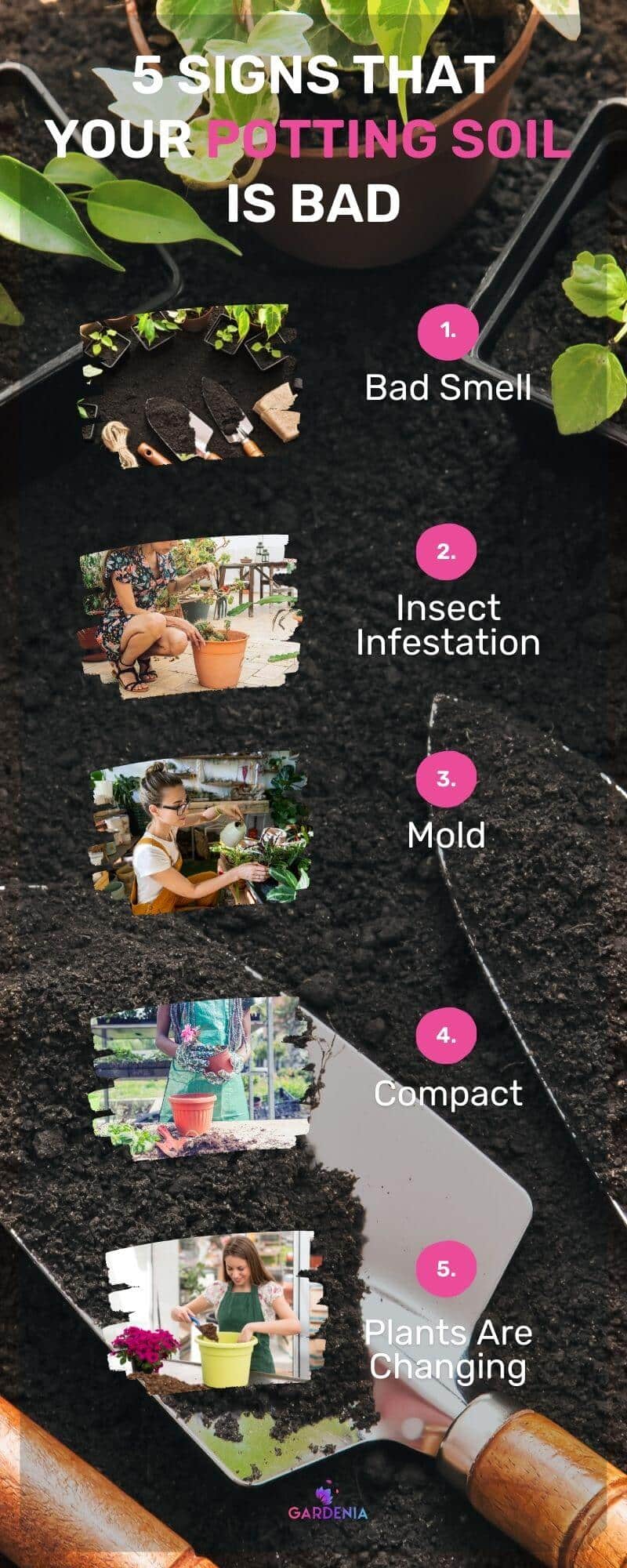
This will usually be a year or two from the date of packaging.
If you’ve had your bag of soil for longer than a year, or you got rid of the original packaging, here are signs that your potting soil might be bad.
1. Bad Smell
If you open the bag of soil, and it is giving off a foul odor similar to rotten eggs, your soil has gone bad.
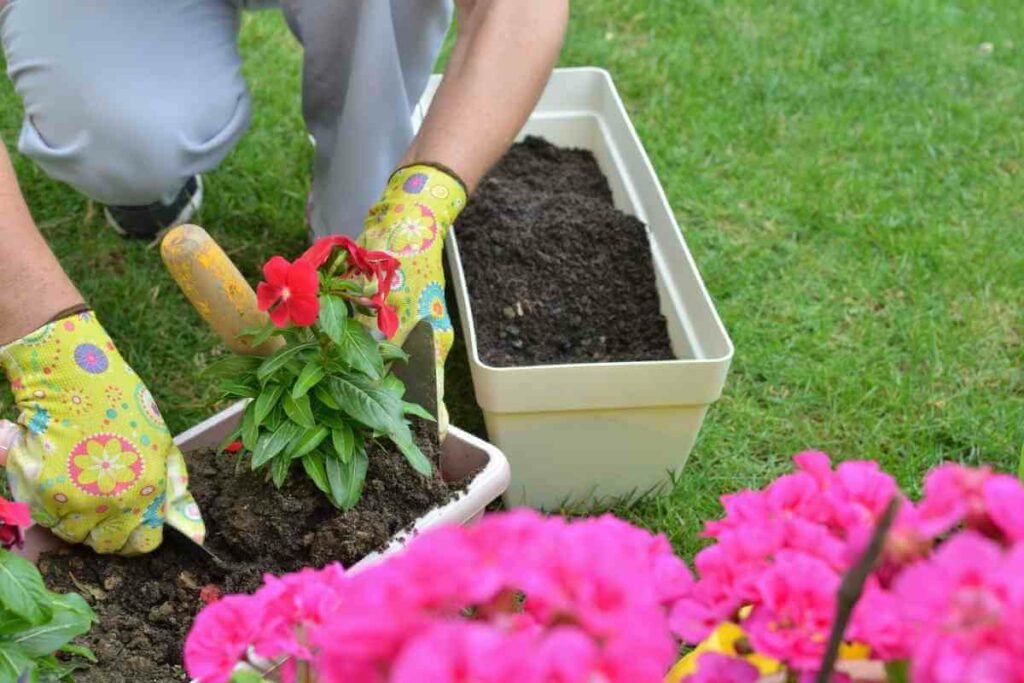
What likely happened was there was a little bit of moisture sealed in the bag, and when combined with bacteria in the soil, it spoiled and created the smell.
You can save your soil by spreading it out thinly on a tray or tarp and leaving it to dry outside on a warm sunny day.
The sun will kill off any bacteria in the soil, both good and bad, so you should mix it with new potting soil before putting plants in the soil.
2. Insect Infestation
Your soil may have gone bad if you open your bag and you are swarmed with insects.
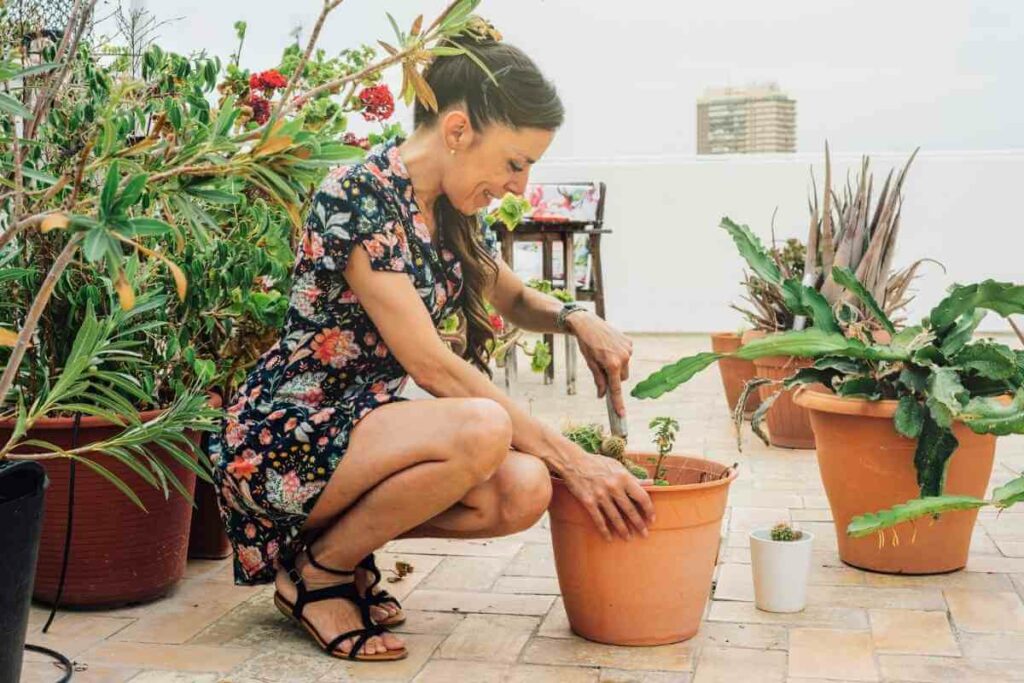
Moist, dark places are breeding grounds for bugs, and they may have found a lovely home in your bag of potting mix.
This soil can still be used. You can use diluted neem oil or sticky traps to kill the insects.
These methods work for bags of potting soil, or for soil that is already in a pot with plants in them.
3. Mold
The white fuzzy growth looks gross, but mold is natural.
It’s what happens when bacteria and moisture combine with poor air circulation.

If you leave a bag of potting soil in a hot car, or if you are overwatering your plants, you might have a mold problem to tackle.
Mold is also a solvable issue. Spread your soil out in a thin layer in the sun.
The airflow and heat will dry out the soil and kill the bacteria. Once the soil is fully dry, put it back in a clean airtight container.
Mature plants can handle moldy soil for short periods until the mold targets the roots, but seeds and young plants won’t be able to survive in moldy soil.
Check the soil for any mold growth before you plant seeds.
4. Compact
Take a look at your potting soil. Does it look compacted?
If you water it, how long does the water sit on top of the soil before being absorbed?
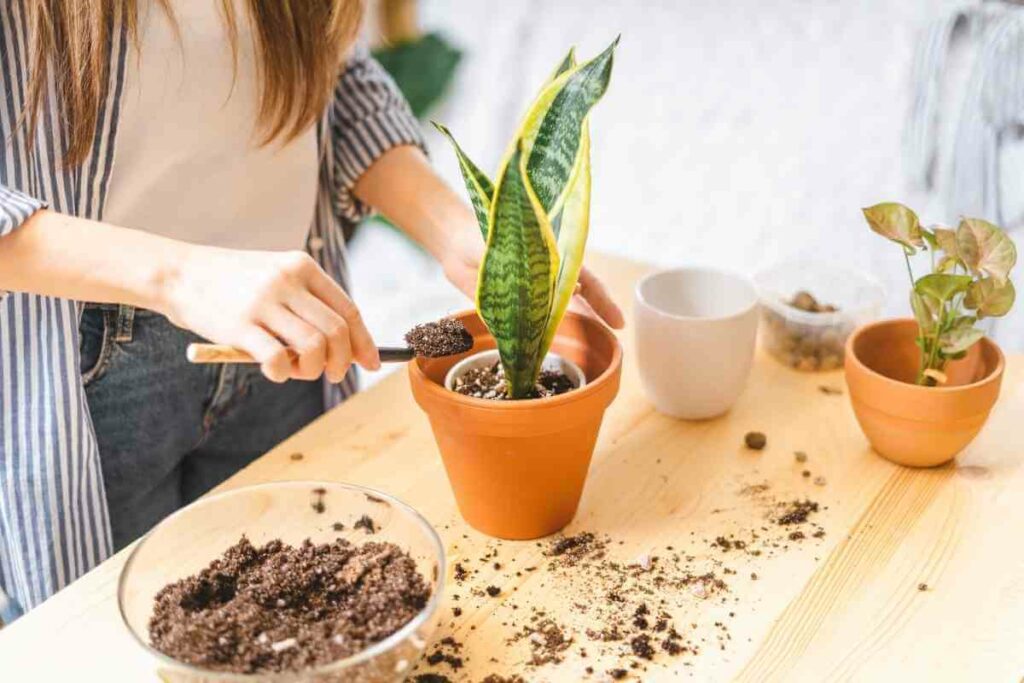
If your soil is compacted and it’s becoming hydrophobic, your soil may have gone bad.
To fix this, remove your plant and mix in fresh potting soil and wetting agents.
The wetting agents will lower the surface tension of the soil and allow water to penetrate the soil easier.
You can also add peat, perlite, coco coir, or rice hulls to your soil to prevent it from compacting again in the future.
5. Your Plants are Changing
If nothing in your environment or watering schedule has changed, but you notice your plants are starting to change, your soil may have gone bad.
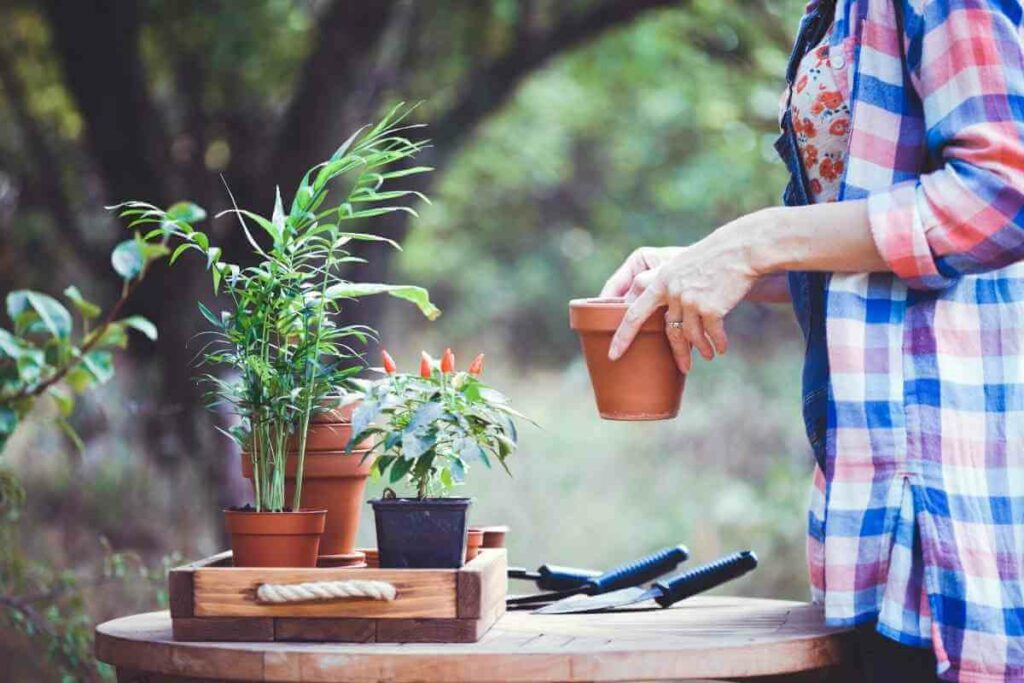
These changes can be:
- leaves changing color
- foliage falling off
- or a decrease in the number of fruit or flowers being produced.
This usually happens because your plants aren’t getting the nutrients they need.
To Fix This: Add fertilizer to your soil. The type of fertilizer you add will depend on your type of plant, but usually, you should add a fertilizer with a higher nitrogen ratio.
Final Thoughts
You can’t save spoiled milk, but you can save spoiled soil.
First, identify what the problem is with your soil, and follow the easy steps to solve the problem.
With a little maintenance, your soil will stay healthy and your plants will grow healthier because of it.
